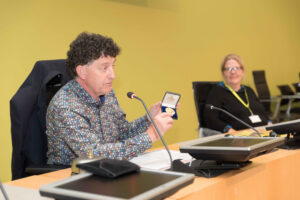*Aoife Johnston.
SHANNON teenager Aoife Johnston’s death was “almost certainly avoidable,” a new report has found.
An investigation into the death of 16-year-old Aoife who died at UHL in December 2022 has found that doctors and nurses at the Emergency Department were unaware of her sepsis risk, and because of overcrowding she was sent to the wrong section of the ED where sepsis forms were not kept or filled out.
On Friday, the HSE published the report of the former Chief Justice Mr Frank Clarke SC on the independent investigation that he led into matters connected with Aoife’s death. The report was commissioned by the CEO of the HSE Bernard Gloster after he received the report of a Systems Analysis Review (a SAR report), prepared under the HSE’s National Incident Management System (NIMS). Bernard Gloster commissioned the Clarke report having considered the conclusions of the SAR and having determined that further investigation was necessary.
Clarke’s report found there was a thirteen-and-a-half hour gap between when Aoife was seen by a GP who queried the possibility of sepsis and when she received treatment. “All of that needs to be seen in light of the National Protocol on sepsis which suggests that treatment should take place within one hour”.
There was also severe overcrowding in the hospital’s emergency department that day. Patients are triaged in UHL in accordance with the Manchester Triage System. This places patients in categories 1 (the most severe) to 5 (the least acute). The ideal maximum time to first contact with a treating clinician for a patient categorised as Category 2, as Aoife was, is 10 minutes, the report said.
There was “no reality” to patients being seen within that window, considering the number of them and the number of staff members available. “Indeed, it would appear that it would have taken over 10 hours (as opposed to 10 minutes) to see all Category 2 patients”.
The report said that while it is impossible to determine at which point in the hours Aoife waited that it was “too late” to save her life, “there can be no doubt that the greater the delay the greater the risk of the tragic outcome which ultimately occurred and, consequently, the less the delay the greater the chance of there having been a positive outcome”.
In his overall conclusions, Mr Clarke said some of the measures which have been adopted since Aoife’s death “may well reduce the risk of similar events occurring in future”. However, he cautioned, “All of the evidence seems to me to confirm that these risks will not be further minimised without addressing the fundamental problem of overcrowding in ED.”
Mr Clarke said the position in ED at UHL “is inextricably linked with the overall capacity of the hospital”. He said on many occasions patients are “boarded” in the ED “simply because there are no beds to which they can be moved” in the hospital.
As a result of that challenge, Mr Clarke warned that a repeat of the tragedy in December 2022 “will inevitably be present”. He said, “Unless and until that problem is addressed, then it seems likely that UHL ED will, unfortunately but regularly, be under pressure and, despite the improvements introduced since 2022, a risk of reoccurrence will inevitably be present”.
The Johnston family have previously expressed their disappointment with the report, having received it in recent weeks. Their solicitor Damien Tansey said that the restrictions imposed on the former chief justice by the HSE “flew in the face of assurances that were given”. In the report, Clarke says that the terms of reference did not allow for the making of adverse findings against individuals or resolving conflicts of fact, contrary to what Aoife’s family had called for.
The HSE said that this made for a much more prolonged process which would have had to ensure that any individuals, who might be the subject of any such adverse finding, were given the full opportunity to present their own side of events and challenge any evidence through cross-examination.
The report gave a series of recommendations, including that the HSE should consider whether GPs could give initial treatment to patients suspected of having sepsis, in an effort to avoid a long wait. It said the HSE should consider ways patients in urgent need of treatment could be triaged more quickly at an emergency department. A patient, once seen and prescribed medication by a doctor, should not be waiting over an hour, as in Aoife’s case, for those medications to be administered, the report said, “Equally the ad hoc system of a doctor asking a nurse in a busy ED to administer a prescription to a patient with no prompt follow-up is unsatisfactory”.
The report also recommended reviews into the prescription and administration of medication, as well as the roles of doctors in a busy emergency department. A study is also needed on how the HSE will respond to an apparent higher number of presentations and a higher percentage of those leading to admission in UHL compared to other hospitals, it said.
HSE CEO Gloster stated, “This report has enabled us already to bring clarity to the concerns that arise from Aoife’s case based on a consideration of the evidence. It has given us a pathway to both learning and accountability. That accountability is and will be pursued fairly and appropriately in a confidential process. The learnings from the report and the recommendations are all being actively considered in the many aspects of improvement that are underway and indeed have relevance to assisting the overall patient safety agenda in all our settings.”

















